A photo-narrative of the adventurous story of “Keys”, the art of needlework and everything we need to know about Palestine.
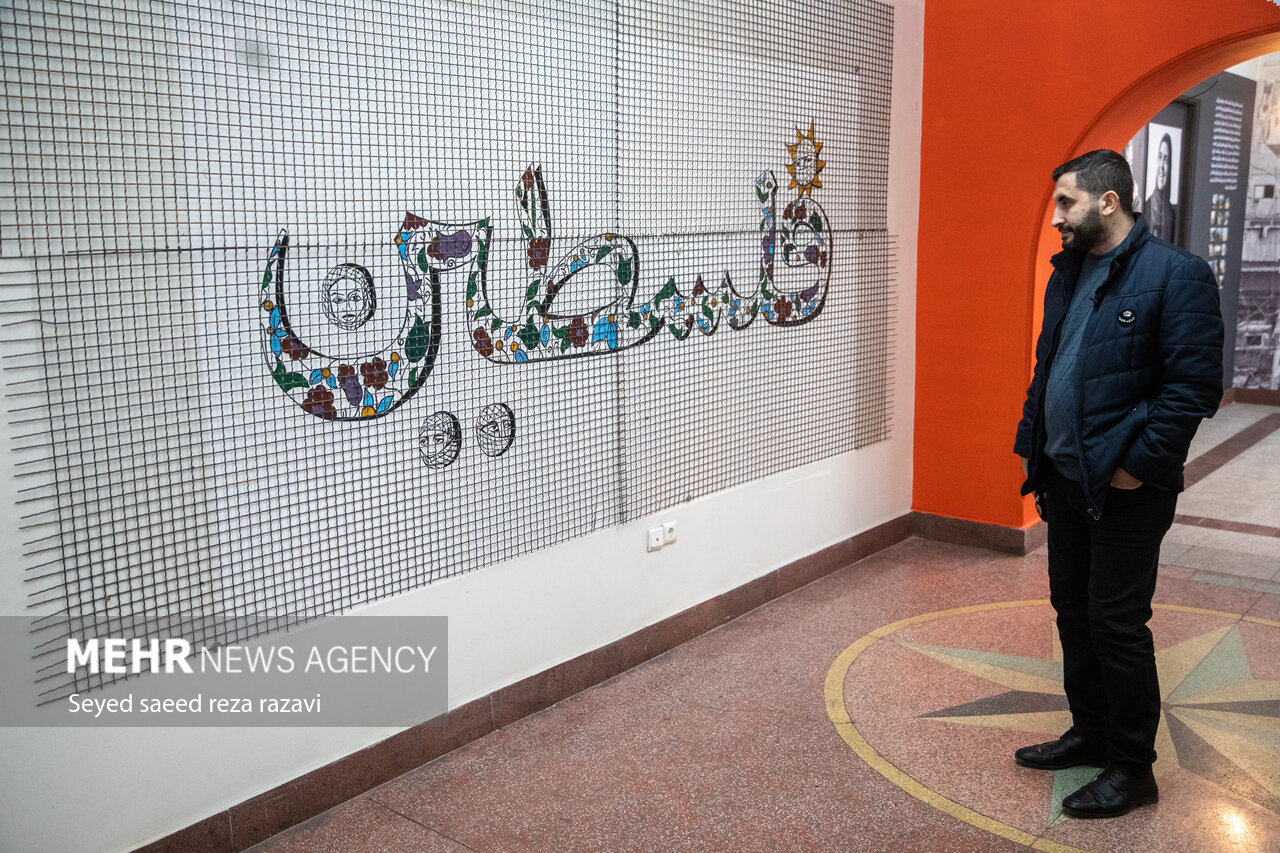
According to Mehr reporter, the photo exhibition “Keys that are older than Israel” is the result of Wahab Ramzi's photography of Palestinian people living in 4 Palestinian refugee camps in Lebanon. This exhibition tells the story of the lives of people who live in the displaced persons camp and have kept the keys of their houses with them in the hope of returning to their homes one day.
The exhibition “Keys that are older than Israel” consists of 4 sections; “Displacement” section where the audience meets the first generation of Palestinians. The “Resistance” and “Life” section, where the next generations of Palestinians and their normal and everyday life are seen. The “Return” section is also the final part of the exhibition, which refers to the long-standing dream of Palestinians to return to their original homeland.
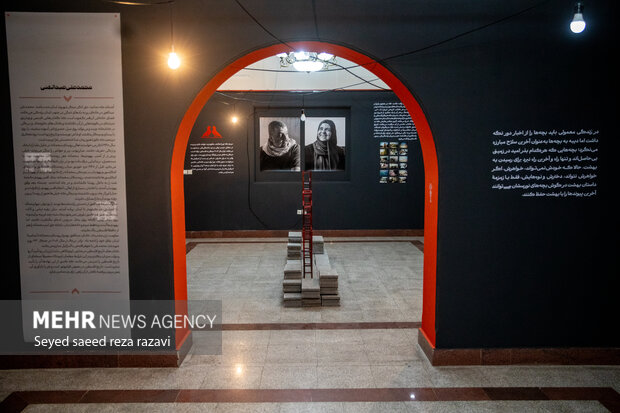
Upon entering this exhibition, we face a dark but hopeful atmosphere, as if we have stepped into a refugee camp. Sometimes a photo and sometimes a number of photos form a collection that attracts attention on the walls of the Museum of Contemporary Arts of Palestine. Next to these collections and photos, you can see a readable narrative that Sajide Ebrahimi wrote these stories and stories based on the photos and stories she heard from Vahb Ramzi.
Few walls have been spared from graffiti and slogan writing, and every slogan, painting, image or symbol is a puzzle of the Palestinian nation. Although never a single symbol or a flag or the image of a key can convey all of Palestinian identity, their repetition actually reveals the hidden social engineering of the camp. Keeping alive the ideals of the homeland and the dream of return by mobilizing public memory is a vital element for giving identity to the generations born in Lebanon.
How to take a closer look at the situation of the Palestinians
Seeing the history of the Palestinian people and meeting them and what their dreams and problems are, helps us to have a closer look at the Palestinian situation.In a conversation with Mehr's reporter, Vahab Ramzi, a photographer, explained about the influence of resistance activists and supporters from exhibitions such as the exhibition “Keys that are older than Israel”. They are geographically, politically, socially, etc. scattered. An important part of the activists of the resistance axis are considered the so-called popular body of the resistance, and I think this exhibition is a meeting with the Palestinian people who are displaced in the Lebanese camps. Seeing the history of these people and meeting them and what their dreams and problems are, helps us to have a closer look at the Palestinian situation.
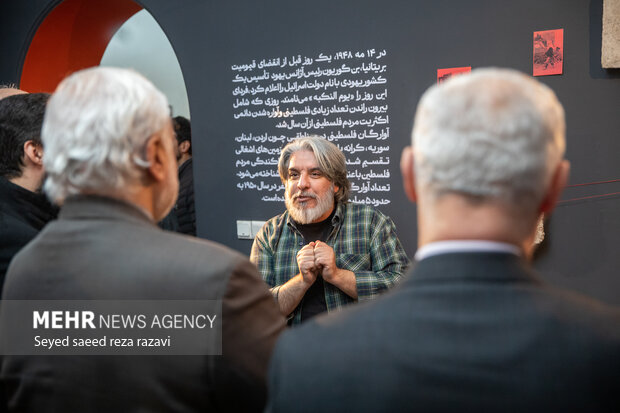
Regarding how effective holding this exhibition can be in the direction of victory and hope for victory and return, he said: Any work and activity that can represent the Palestinians in a real and effective way, towards victory and their return to their original homeland. It helps because the Palestinians really hope to return, and if they didn't, they wouldn't have resisted and fought for 75 years. It is enough to mirror and show them that showing them and their goals is a victory and a dream of return.
In every part of the exhibition where you step, an attempt has been made to evoke a sense of pain and sadness and life in the Palestinian refugee camp. For example, where the picture of Muhammad Abdul Ghani, who is considered to be among the first generation of Palestine, is in a corner of the wall exhibition, his gaze is very meaningful as if he is looking towards hope and light.
In parts of the narration of Mohammad Ali Abdul Ghani's photo, it is stated: “They came not to stay; The right if they have already become citizens of Lebanon. Mohammad Ali Abdul Ghani lives in a house facing the north winds in southern Lebanon. The space of his house is so open that he has placed old vases and a glass display case in the corners of it, and he has arranged small and large books in the library, and he can sit comfortably on his wicker sofa, cross his legs and smoke a cigarette. He is a poet, writer and historian; An intellectual in exile whose time has yet come to be known. In 1948, if they wanted to describe the people of Sehamateh village in Upper Jalil with one characteristic, they would have given the example of their young and old fighters. Long before the arrival of the Jews, Sehmata was the headquarters of resistance fighters; It was at odds with the British colonists and resisted their occupation. Before 1948, a bloody battle took place between Palestinian fighters and British and Jewish forces near Sehmata and a large number of Jews and British were killed. Sehmata fighters dragged a killed Jewish officer into the village and threw him in a well. A few months later, the Jews came and took revenge on the Jewish officer by killing many of the residents, and they pulled his body out of the well and bombarded it while many people had not yet left the village.

Abdul Ghani's Shia family was one of the first evicted. From the fourteen-year-old teenager to his ancestors, they walked ten kilometers to Lebanon and did not take clothes and furniture like others. Still, no one can believe that several strangers will come overnight and claim ownership not on a land, but on a land. The history of Palestine is subject to being forgotten, and there is no way to survive except by remembering it, writing poems and telling stories about it.
The exhibition “Keys that are older than Israel” is an attempt to see and get to know the Palestinian people. Therefore, the knowledge between the two nations is very low and this exhibition will increase a small part of this knowledgeThe light and color that is similar to the refugee camp
Wehb Ramzi explained about the renovated spaces in the exhibition and whether the feeling of being in war zones was created: During our trip to Lebanon and we went to 4 Palestinian camps, we did other things besides taking pictures, including We talked with them and bought a bunch of products that we had the conditions for, some of which we also displayed in the exhibition. Amir Hossein Khalili, with whom we went on this trip, was busy producing a documentary film about this trip, based on which we also have good interviews with the Palestinian people. The aesthetic color was also important to us, so we tried to turn all the photos and videos, along with the pains and regrets and memories we had from there, into an exhibition experience.
He clarified: In the exhibition, the choice of material, color and lighting model was not in such a way that we recreated the atmosphere of the camp exactly, but we were inspired by them to have an exhibition space.
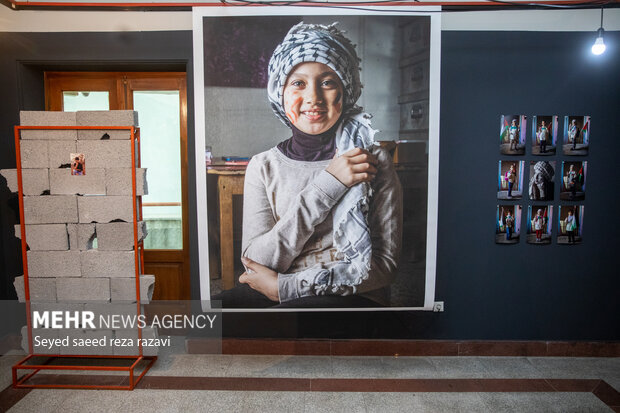
Why do Palestinians and Iranians know each other less?
This graphic designer and photographer explained about the other goals of his exhibition: We may know some things about Palestine, but we know very little about the Palestinians, and it might even be said that we know nothing; To the same extent, Palestinians know little or nothing about Iranian people except for the things that have reached their ears through the media. The main burden of the Palestinian issue is primarily on the Palestinians themselves, and the solution of the Palestinian issue must be done by them, and an external force cannot make decisions for them, such as Iran's proposal to launch a free referendum for the Palestinians. The exhibition “Keys that are older than Israel” is an attempt to see and get to know the Palestinian people. Therefore, the knowledge between the two nations is very low and this exhibition will increase a small part of this knowledge.

Regarding the illegibility of the poster of the exhibition “Keys that are older than Israel” and how much it reflects the atmosphere of the exhibition, he said: the same style is used in the exhibition space, which is also present in the poster. Palestinians have a traditional needlework art called “Tatriz” that we tried to use this art in graphics to create an exhibition space and poster typography, which is inspired by the Palestinian “Tatriz” art. On the other hand, the title of the exhibition emphasizes the word “key”. “Key” is an important keyword for Palestine, because the Palestinians kept the keys to their houses and this element has become a symbol of ownership of their land and house.
The graphics of the exhibition and poster are taken from the thousands of years of Palestinian women's art and the key form of people's houses
In the end, Ramsay stated: The graphic of the poster, in addition to being inspired by the art of “Tatriz”, on the other hand, formally and abstractly, also evokes the form of old keys. Now, how much this issue is indicative of the goals of the exhibition organizers, naturally, we should talk about it in an expert position.
“Tatriz” is the name of Palestinian women's art of needlework, which has thousands of years of roots. This art, which is a symbol of Palestinian identity, has created beautiful patterns and designs on the clothes of Palestinian women for a long time. Palestinian women have been embroidering their fabrics with hooks and needles since before Christ, and this art has been passed down from mother to daughter until today. Today, “Tatriz” has become one of the symbols of Palestinian women. There are many images of the traditional clothes of Palestinian women, before the Zionist regime expelled the Palestinians from their ancestral land, which shows that the Palestinian culture is rooted in the region to the extent that this art has been transferred from Palestine to other lands. Arab countries have introduced needlework to their culture by following the art of Palestinian women.
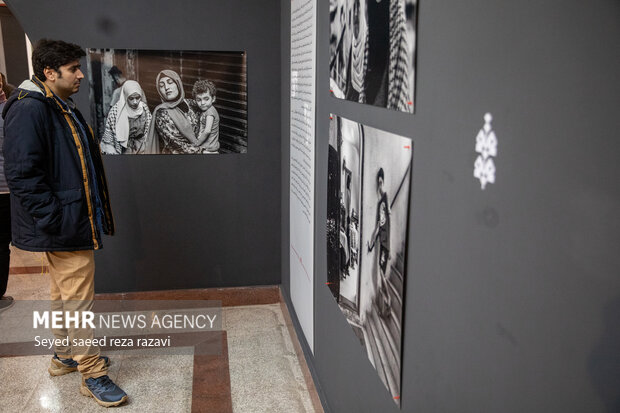
In the part of the exhibition that depicts the life and play of children, a series of photos narrates the children playing in the refugee camp. In the explanation of the narrative of this collection, it is stated: “Poverty and limitations have blossomed their creativity and talent and provided them with free toys.” They put the firecracker on the barrel, set it on fire, throw it and shout with joy after their accurate aim. A natural and common game between boys who are in childhood and in the transition to adolescence, it probably exists everywhere in the world, but one cannot ignore the sad situation that is going on in the world around this gang.
Children are not seen like invisible actors on the stage; Seeing them requires doing something for them. A work that is not only a temporary relief to their wounds and removes the essence of the purulent gland; A tuber that stole their resources, job opportunities, land and air, and doesn't sell them even a dream of tomorrow. Children living in the camp are like guests like their elders; Uninvited guests who do not want to attend this feast and the enemy has closed the way back to them. They have to choose; between staying and doing nothing or resistance and the fight that started from these narrow streets and with these small homemade weapons. Will the boy be a guest of the camp, one of the future fighters of Palestine?
Source:mehrnews